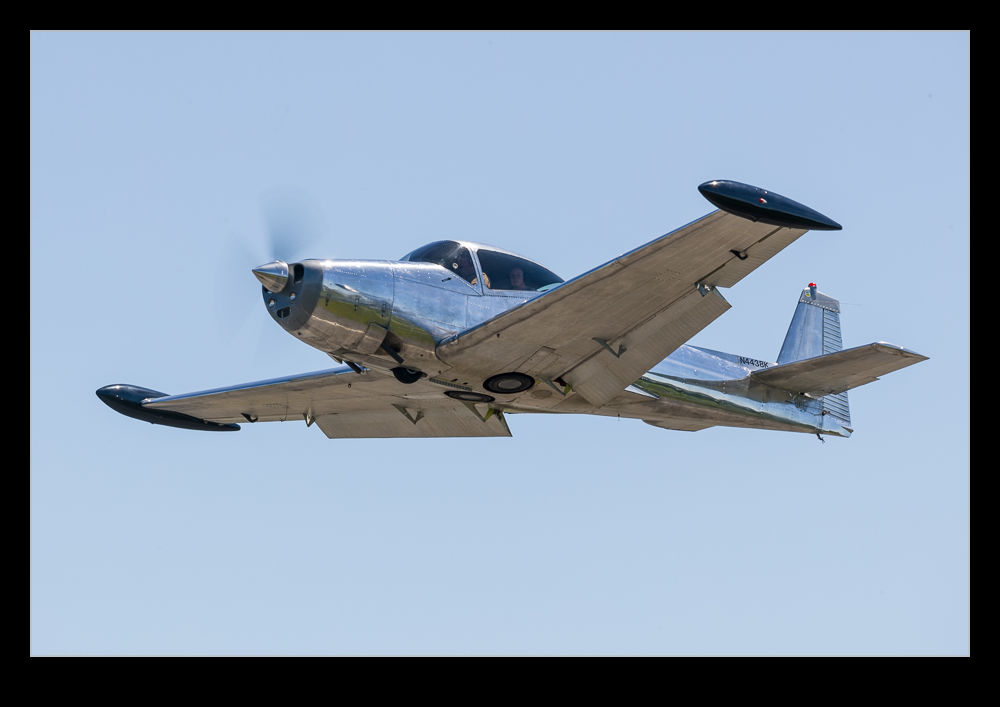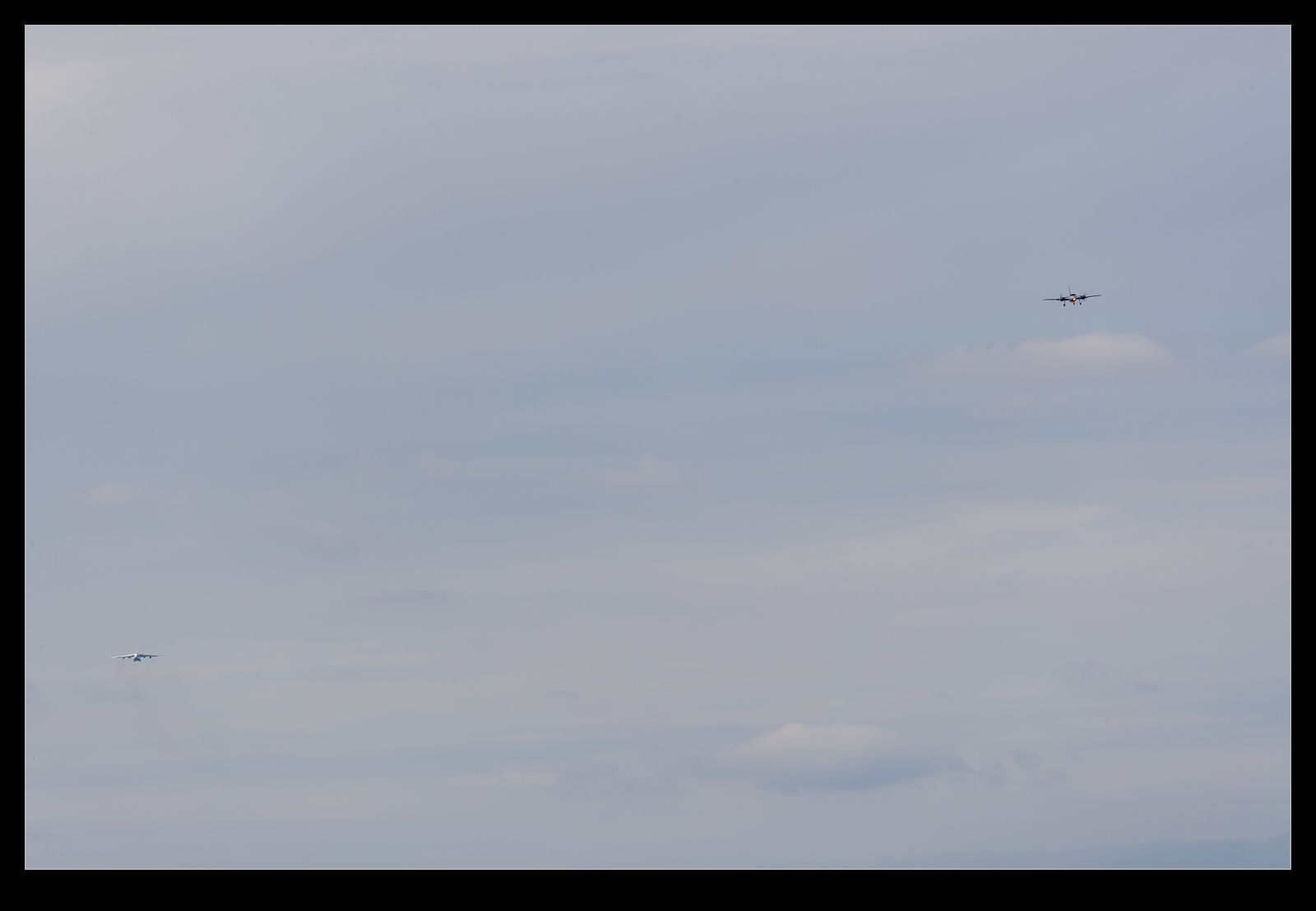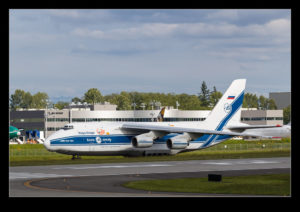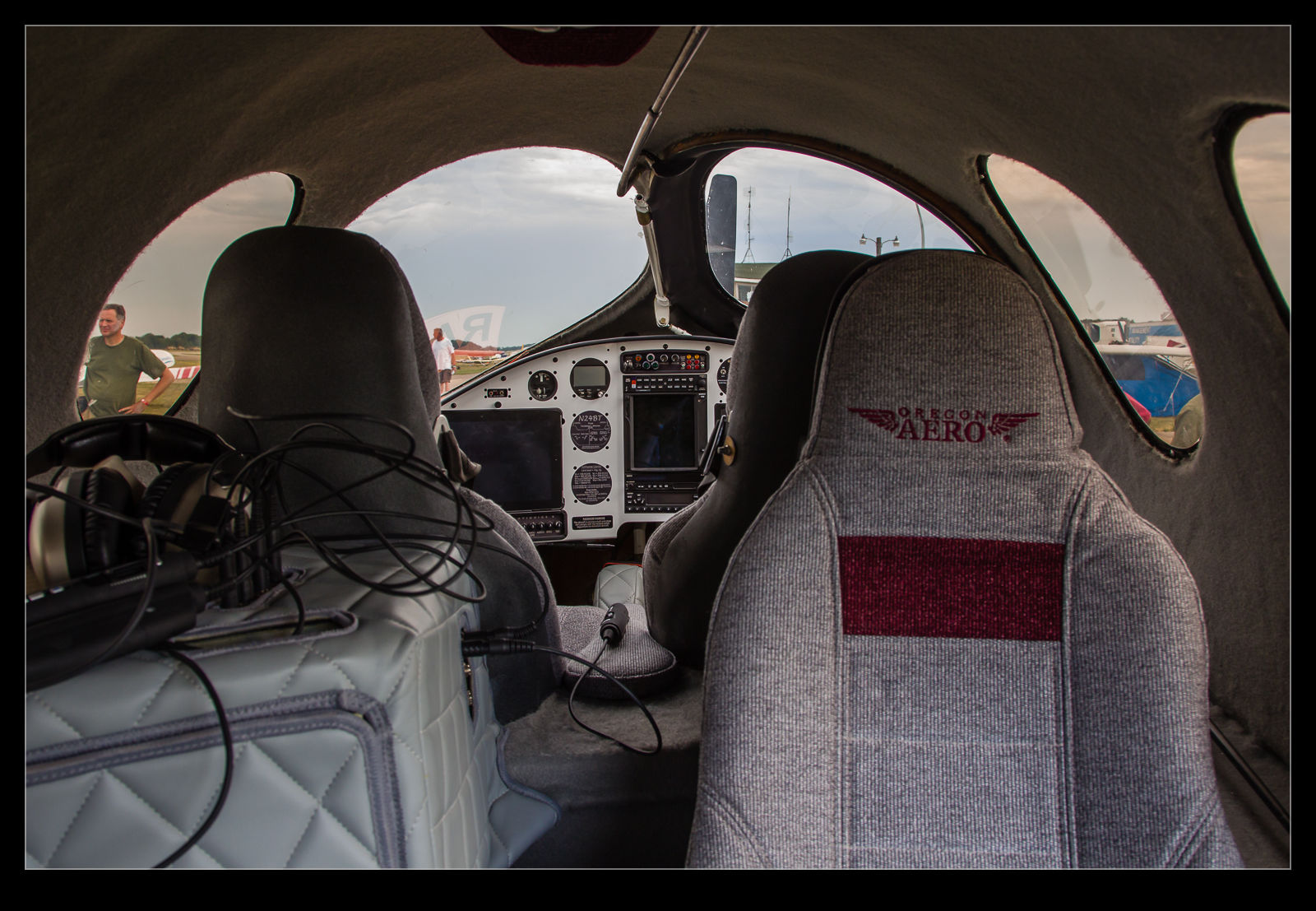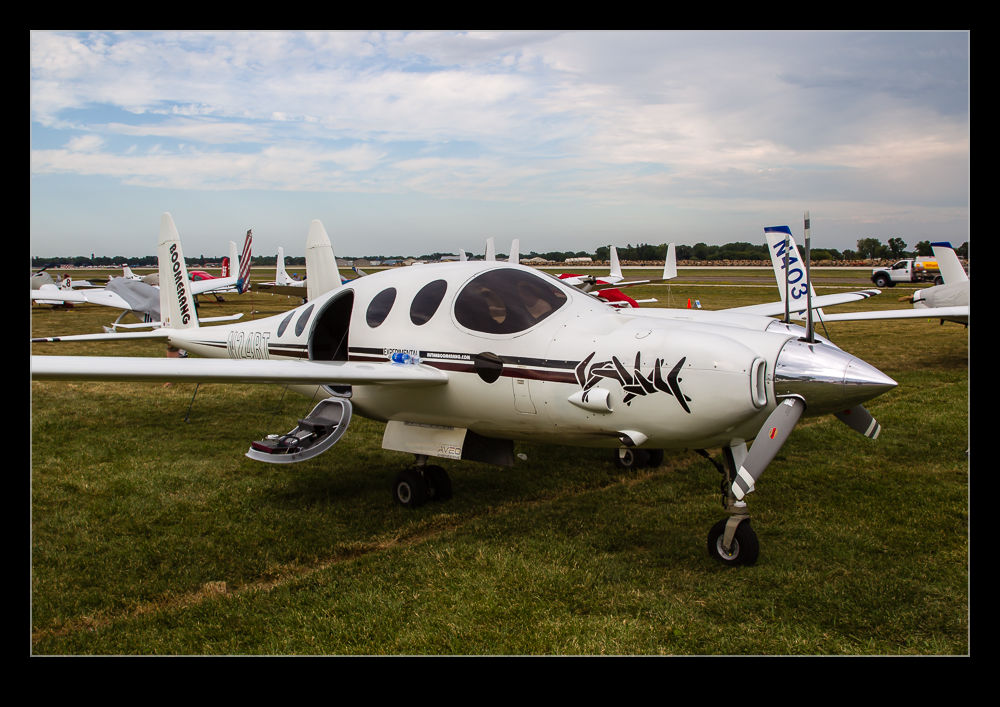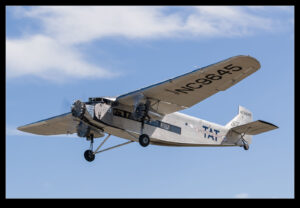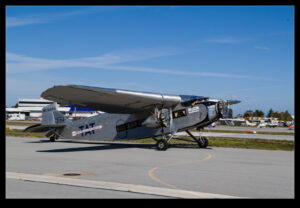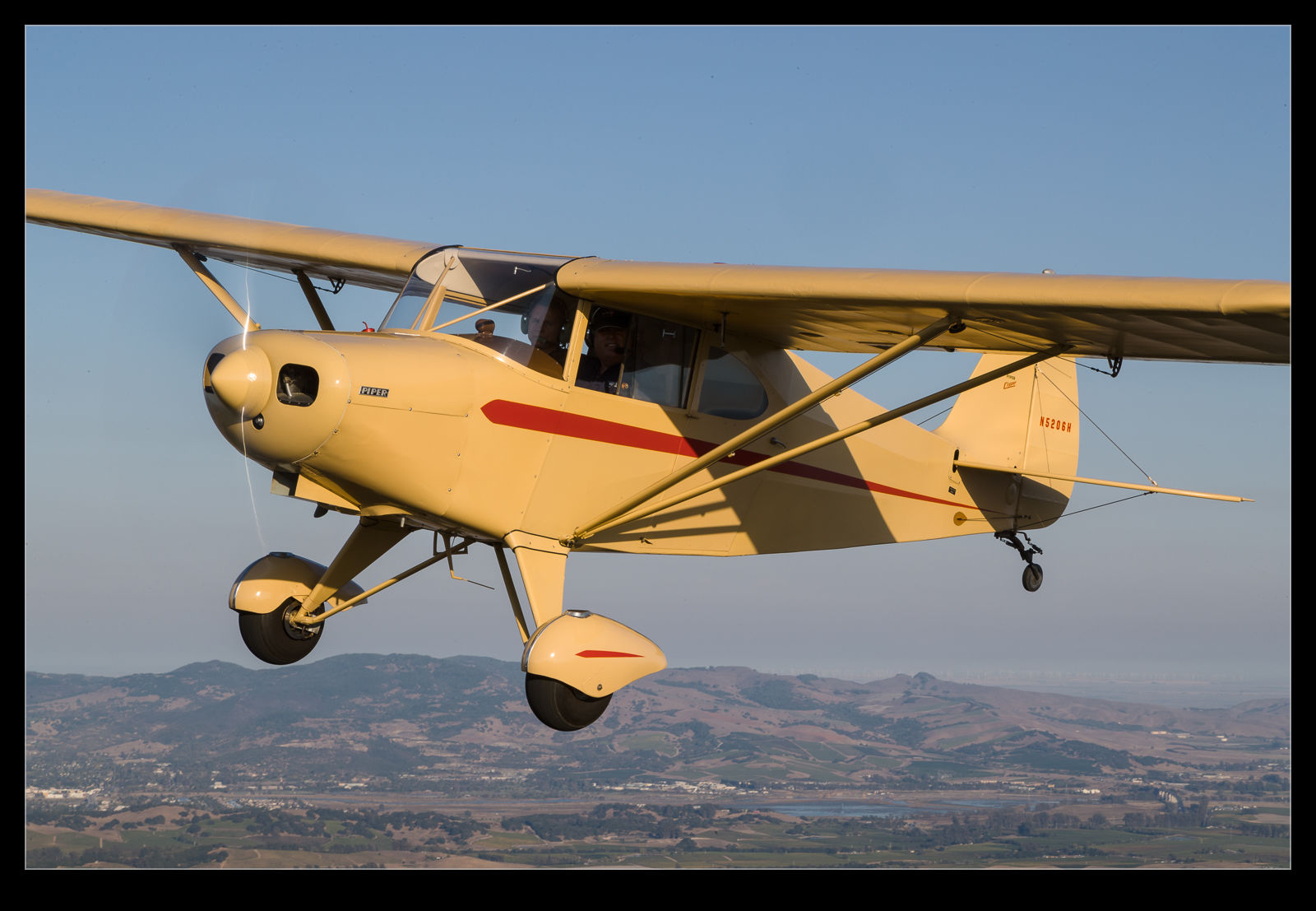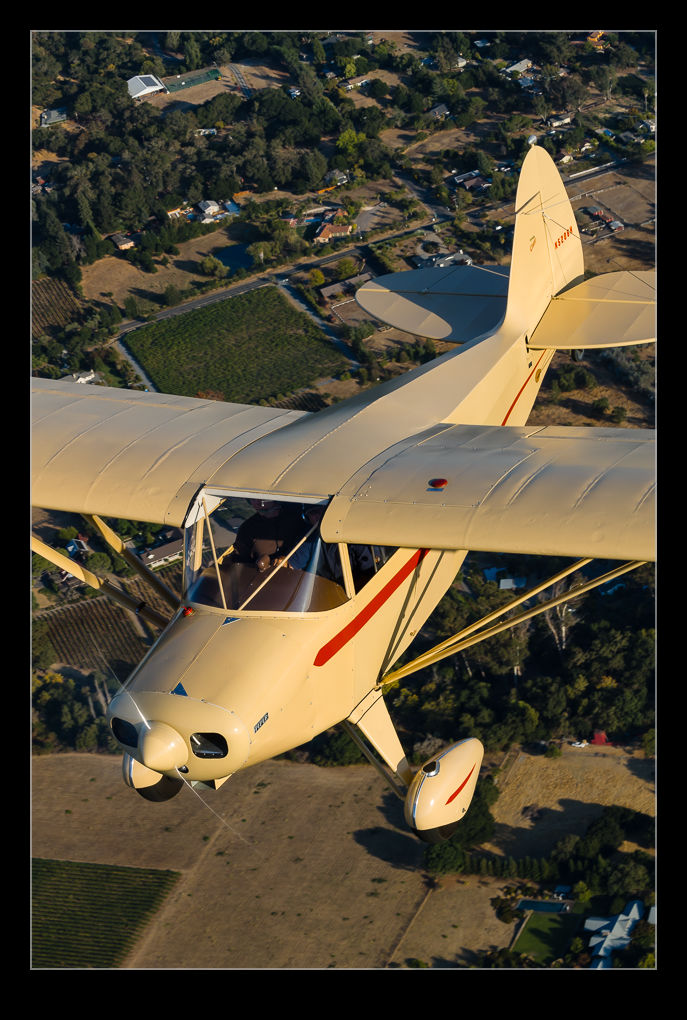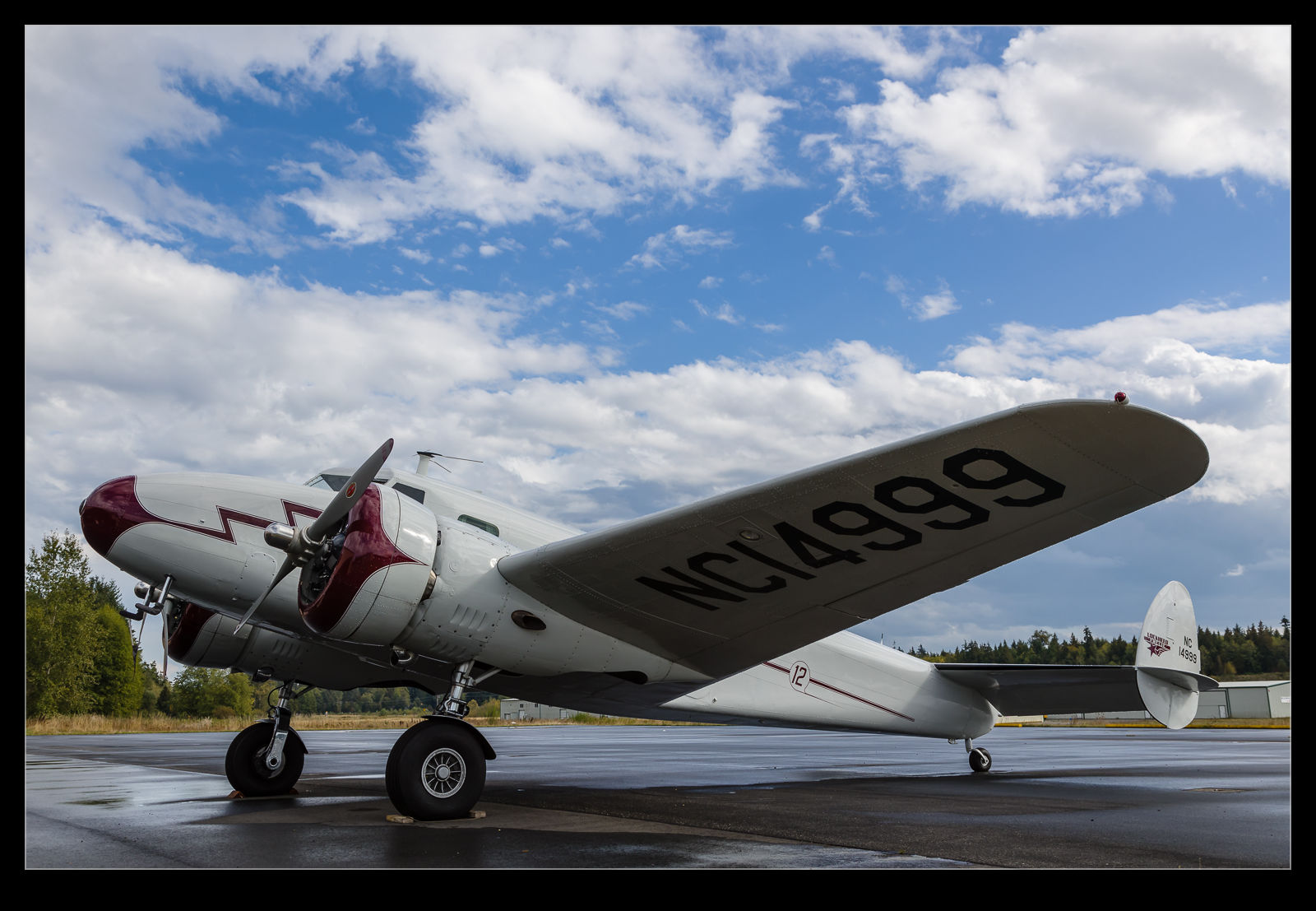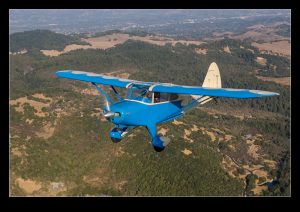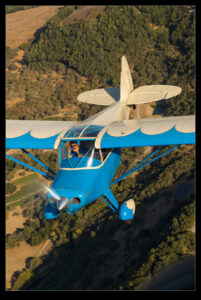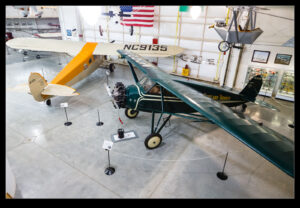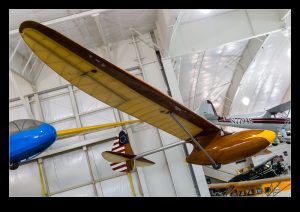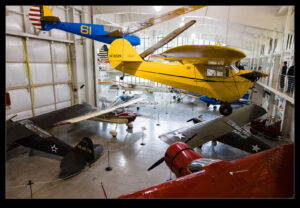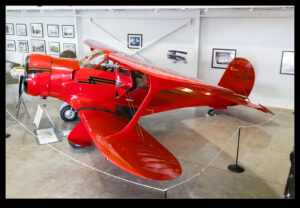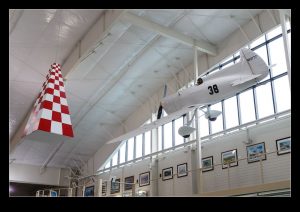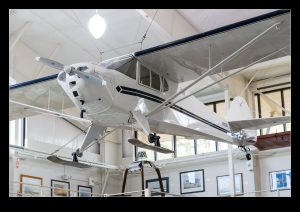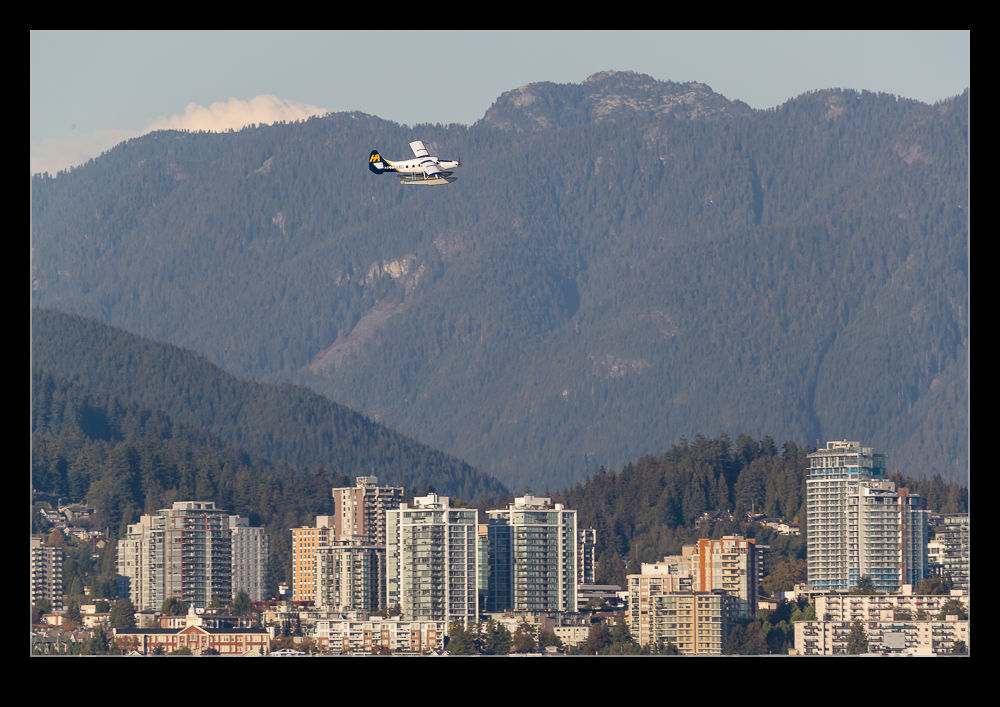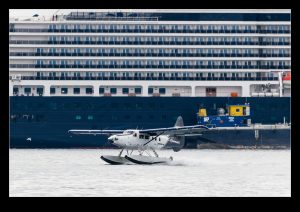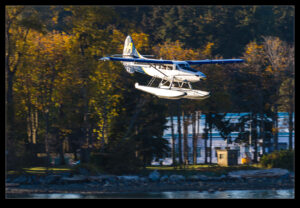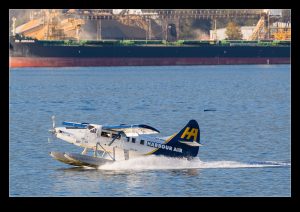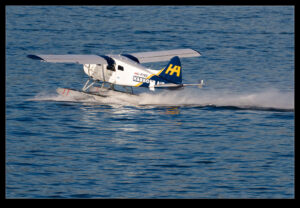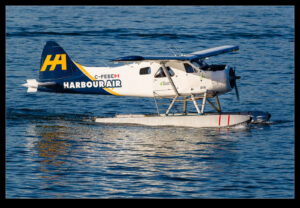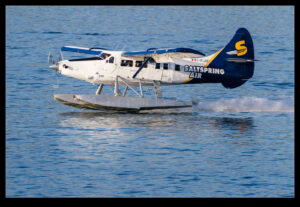 A gear up landing is never something you want to have. What is worse is doing it in front of a lot of people. However, the crowd can sometimes be a benefit. The open house at Paine Field included some flybys by various types and one Navion was the last in his group to recover. Coming down the approach with flap deployed but no gear he looked very odd. I imagine the horn should have been blaring but, whatever the reason, he continued. Much frantic waving by the crowd and a call from the air boss had the desired effect, fortunately. A go around ensued followed by a normal approach a landing. I understand many beers were bought that night.
A gear up landing is never something you want to have. What is worse is doing it in front of a lot of people. However, the crowd can sometimes be a benefit. The open house at Paine Field included some flybys by various types and one Navion was the last in his group to recover. Coming down the approach with flap deployed but no gear he looked very odd. I imagine the horn should have been blaring but, whatever the reason, he continued. Much frantic waving by the crowd and a call from the air boss had the desired effect, fortunately. A go around ensued followed by a normal approach a landing. I understand many beers were bought that night.
Tag Archives: piston
Ruslan Chases the Small Guys at Paine Field
 Antonov 124s make a regular appearance at Paine Field. Boeing obviously receives a lot of shipments which I am guessing may be engine deliveries. Plenty of the flights come from Columbus OH which is near a GE plant and the GE90-115 fan is too big for most freighters when installed. However, it could be for something else. Anyway, I got one coming in to Everett recently. Paine Field is a popular field for light aircraft so you get a lot of them flying patterns on the main runway. One called up on final when the Ruslan was turning on to final. They made it in without any trouble but it was quite amusing to see the little plane on final with the unmistakable silhouette of the Antonov not far behind.
Antonov 124s make a regular appearance at Paine Field. Boeing obviously receives a lot of shipments which I am guessing may be engine deliveries. Plenty of the flights come from Columbus OH which is near a GE plant and the GE90-115 fan is too big for most freighters when installed. However, it could be for something else. Anyway, I got one coming in to Everett recently. Paine Field is a popular field for light aircraft so you get a lot of them flying patterns on the main runway. One called up on final when the Ruslan was turning on to final. They made it in without any trouble but it was quite amusing to see the little plane on final with the unmistakable silhouette of the Antonov not far behind.
Preserved KC-97
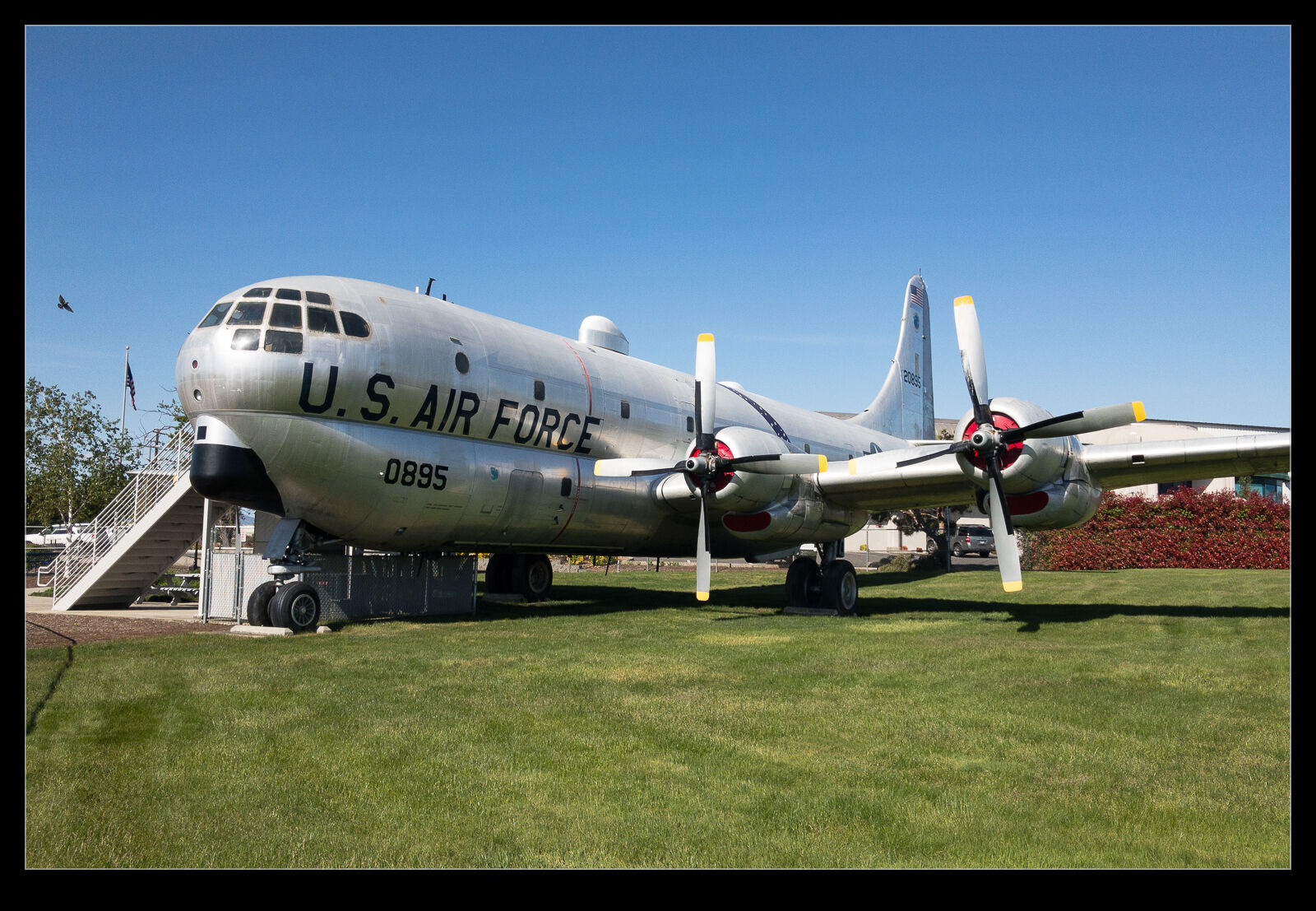 A strange airfield means time for a trip around the perimeter to see what is around. Medford didn’t disappoint. A small museum included a nicely preserved Boeing KC-97 tanker aircraft. Sadly, everything was closed up so I couldn’t take a closer look. Meanwhile, the fencing around it was pretty close in so it was a bit of struggle to get a clean shot but there will still some options. The boom was no longer fitted but, otherwise, it looked just like you would hope.
A strange airfield means time for a trip around the perimeter to see what is around. Medford didn’t disappoint. A small museum included a nicely preserved Boeing KC-97 tanker aircraft. Sadly, everything was closed up so I couldn’t take a closer look. Meanwhile, the fencing around it was pretty close in so it was a bit of struggle to get a clean shot but there will still some options. The boom was no longer fitted but, otherwise, it looked just like you would hope.
Boomerang
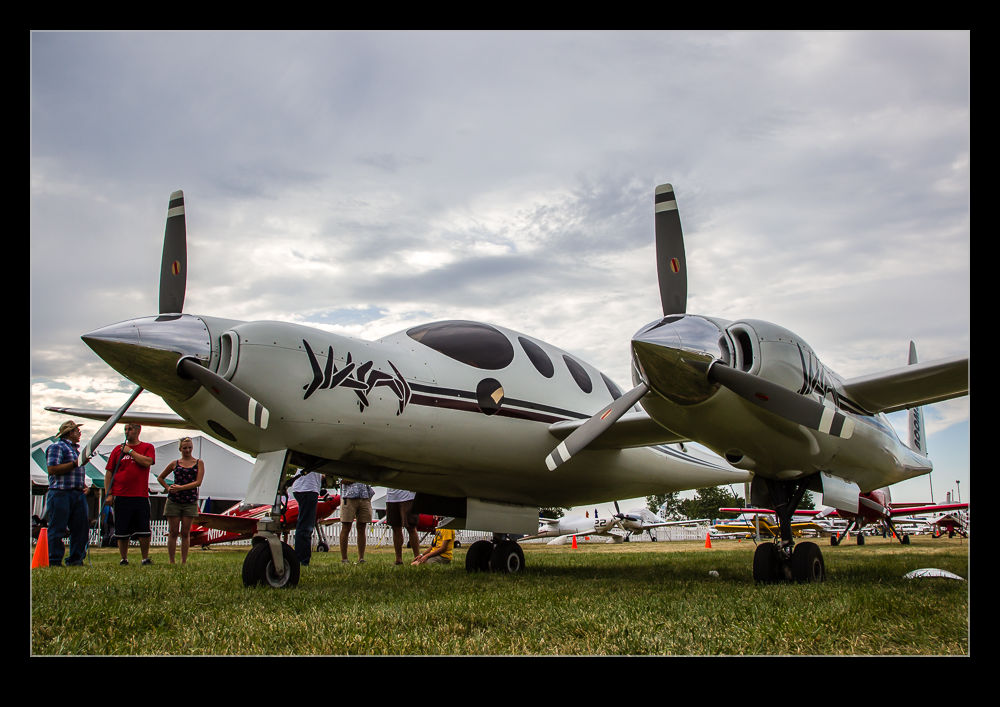 This plane is a great example of what an imaginative mind can achieve when combined with an understanding of aerodynamics. It is one of the products of the talent that is Burt Rutan. When Burt ran Scaled Composites, he specialized in creating aircraft that were out of the ordinary and yet capable performers. The Boomerang is an asymmetric airframe that provides twin engine performance with more benign handling in an engine out configuration. I came upon it during a visit to Oshkosh for Airventure.
This plane is a great example of what an imaginative mind can achieve when combined with an understanding of aerodynamics. It is one of the products of the talent that is Burt Rutan. When Burt ran Scaled Composites, he specialized in creating aircraft that were out of the ordinary and yet capable performers. The Boomerang is an asymmetric airframe that provides twin engine performance with more benign handling in an engine out configuration. I came upon it during a visit to Oshkosh for Airventure.
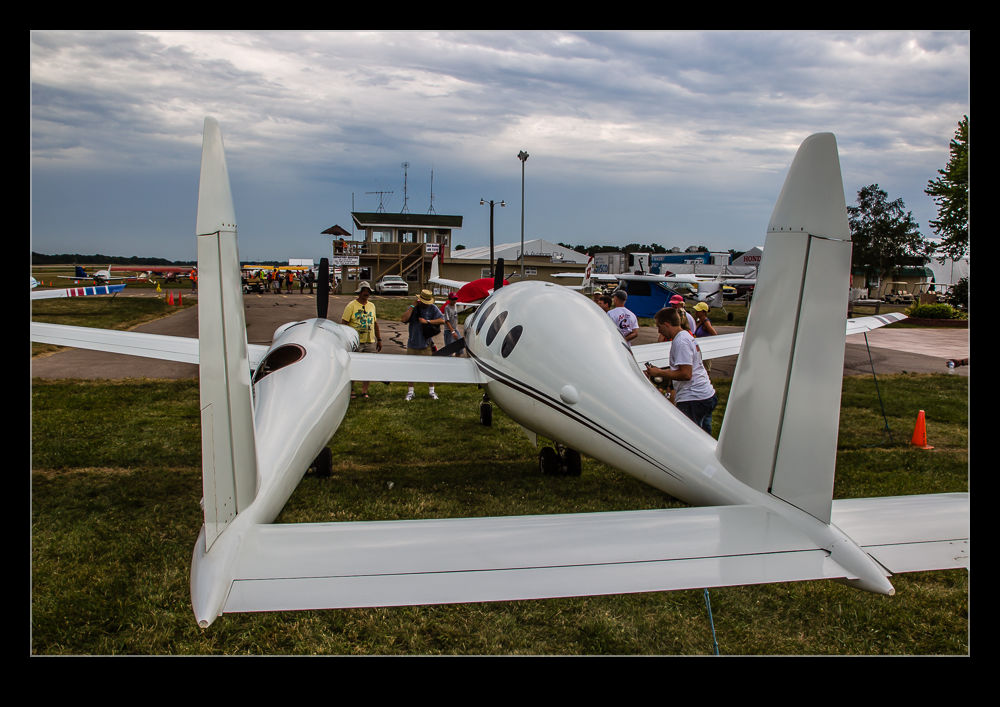 The owner at the time was very happy to share his aircraft with anyone who was interested and, given the unusual nature of the plane and the fascination people have with Rutan’s creations, he was never short of visitors. I didn’t spend much time with him but, while I was there, I was struggling to find angles to shoot the plane from to emphasize what makes it special. Getting it in flight would have helped but it was fun checking it out while it was on the ground.
The owner at the time was very happy to share his aircraft with anyone who was interested and, given the unusual nature of the plane and the fascination people have with Rutan’s creations, he was never short of visitors. I didn’t spend much time with him but, while I was there, I was struggling to find angles to shoot the plane from to emphasize what makes it special. Getting it in flight would have helped but it was fun checking it out while it was on the ground.
A Different Trimotor
 EAA undertake nationwide tours where they take a Ford Trimotor to local airfields and give people the chance to experience a ride in a plane from another era. One of their regular stops is San Carlos CA. When I saw them operating there on a previous occasion (and posted about it here), they brought an airframe that I had seen a number of times before at Oshkosh and around Illinois. This time they brought a different airframe which is slightly larger and accommodates one extra passenger.
EAA undertake nationwide tours where they take a Ford Trimotor to local airfields and give people the chance to experience a ride in a plane from another era. One of their regular stops is San Carlos CA. When I saw them operating there on a previous occasion (and posted about it here), they brought an airframe that I had seen a number of times before at Oshkosh and around Illinois. This time they brought a different airframe which is slightly larger and accommodates one extra passenger.
 It would have been rude not to pop along at least once to see it in action. It did appear to be slightly larger to my eye but that was not a scientific assessment. The different paint finish was the real giveaway that they had brought something different. The conditions were nice to get some shots. I was planning on catching it again when it came to another local field but the weather ended up being pretty awful so this was my only encounter.
It would have been rude not to pop along at least once to see it in action. It did appear to be slightly larger to my eye but that was not a scientific assessment. The different paint finish was the real giveaway that they had brought something different. The conditions were nice to get some shots. I was planning on catching it again when it came to another local field but the weather ended up being pretty awful so this was my only encounter.
Scott’s Clipper
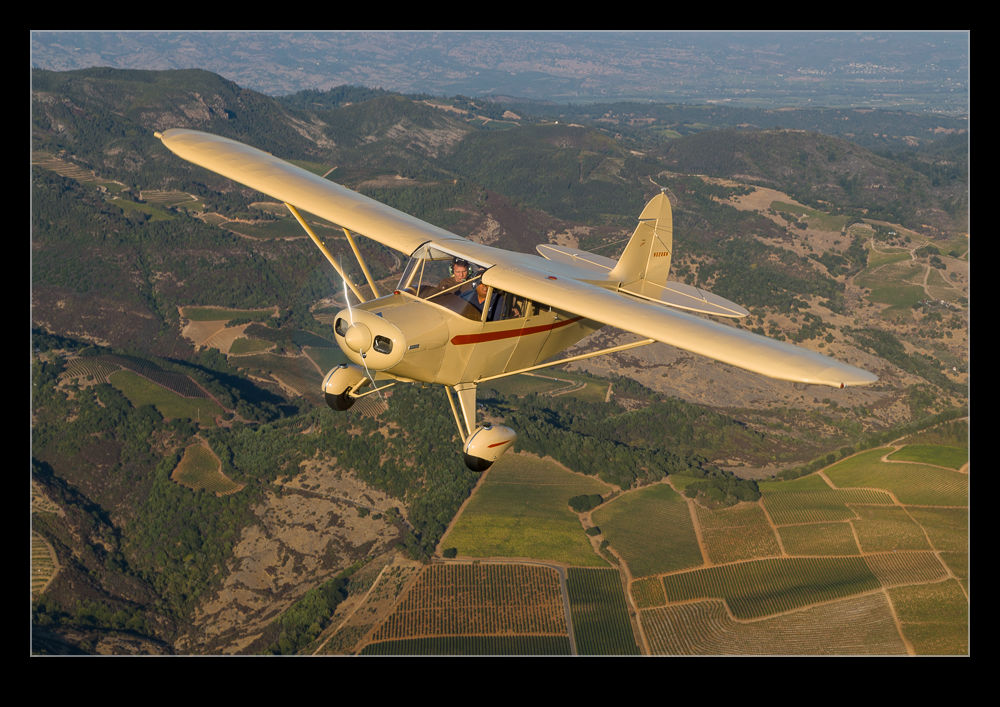 The trip to photograph Eric’s Clipper that I described here included a bonus (as if the flight wasn’t bonus enough). Eric had talked to another Clipper owner, Scott, and he had brought his plane across to Sonoma. Scott is not a formation pilot but Eric landed after the shoot with his plane and jumped in to Scott’s plane with Scott in the second seat. We orbited overhead until they joined up and then we got a bunch of additional shots.
The trip to photograph Eric’s Clipper that I described here included a bonus (as if the flight wasn’t bonus enough). Eric had talked to another Clipper owner, Scott, and he had brought his plane across to Sonoma. Scott is not a formation pilot but Eric landed after the shoot with his plane and jumped in to Scott’s plane with Scott in the second seat. We orbited overhead until they joined up and then we got a bunch of additional shots.
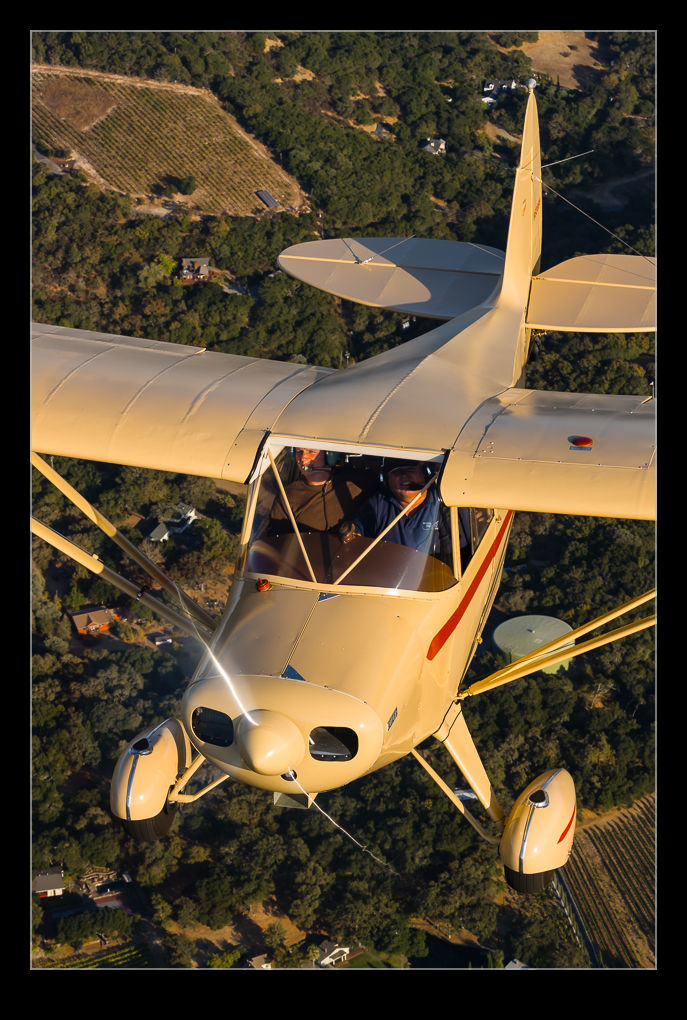 Since it was a bit later in the day, the light had got a bit better. The colors of Scott’s plane were particularly receptive to the evening light and, while it was a totally stock aircraft and therefore not possible to get too vertical with (see the roof mods in Eric’s plane in the other post), we could still get some great shots. Thanks Dave and Eric (and Scott for bringing your plane).
Since it was a bit later in the day, the light had got a bit better. The colors of Scott’s plane were particularly receptive to the evening light and, while it was a totally stock aircraft and therefore not possible to get too vertical with (see the roof mods in Eric’s plane in the other post), we could still get some great shots. Thanks Dave and Eric (and Scott for bringing your plane).
Oh, a Lockheed 12!
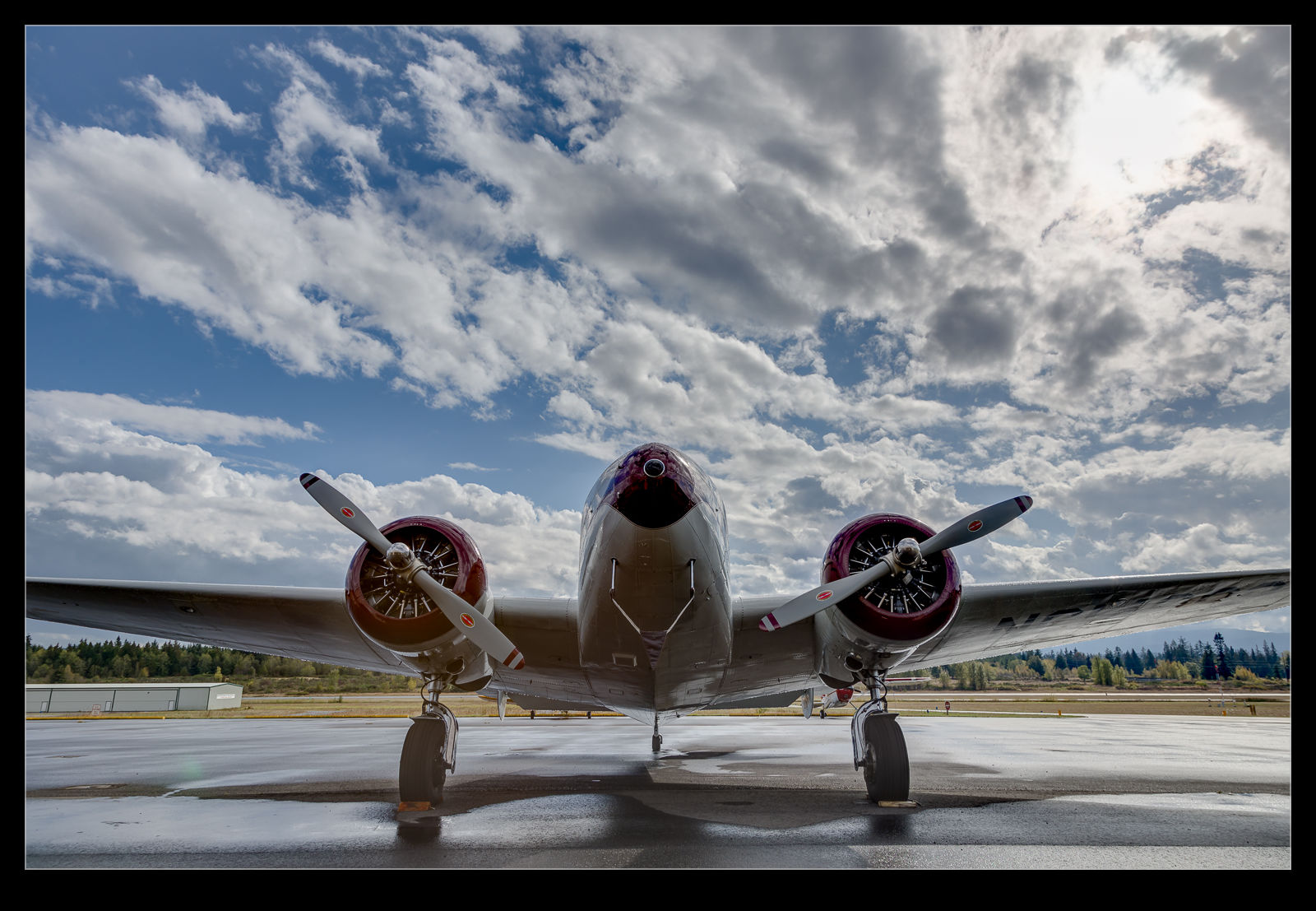 My visit to Port Townsend Aero Museum (which is covered in this post) was followed up by a quick walk around the ramp near the museum. There were plenty of cool types around but I was instantly drawn to a Lockheed 12 that was parked up. From a distance you could confuse this with a Beech 12 if you weren’t paying attention but, as soon as you look closer, the longer lines of the Lockheed show themselves.
My visit to Port Townsend Aero Museum (which is covered in this post) was followed up by a quick walk around the ramp near the museum. There were plenty of cool types around but I was instantly drawn to a Lockheed 12 that was parked up. From a distance you could confuse this with a Beech 12 if you weren’t paying attention but, as soon as you look closer, the longer lines of the Lockheed show themselves.
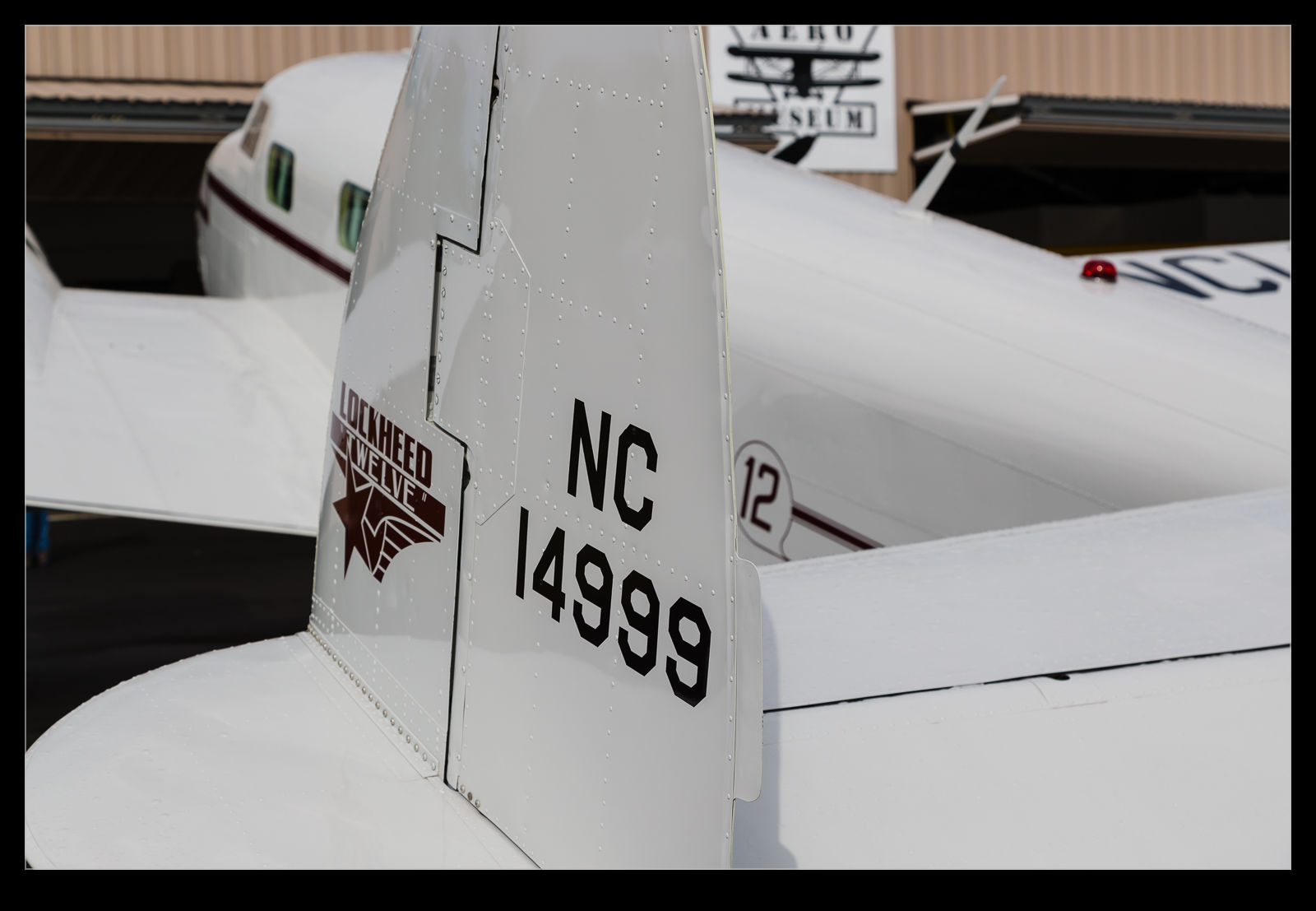 Apparently this airframe is for sale. I am not familiar with the pricing of old aircraft but I believe that the Lockheed goes for an awful lot more than the similar Beech. I guess there are a lot more Beeches around. This one was tail on to the sun which was a touch inconvenient but, since they were willing to let me shoot to my heart’s content, I was hardly going to complain. A little HDR helps too.
Apparently this airframe is for sale. I am not familiar with the pricing of old aircraft but I believe that the Lockheed goes for an awful lot more than the similar Beech. I guess there are a lot more Beeches around. This one was tail on to the sun which was a touch inconvenient but, since they were willing to let me shoot to my heart’s content, I was hardly going to complain. A little HDR helps too.
Eric’s Clipper
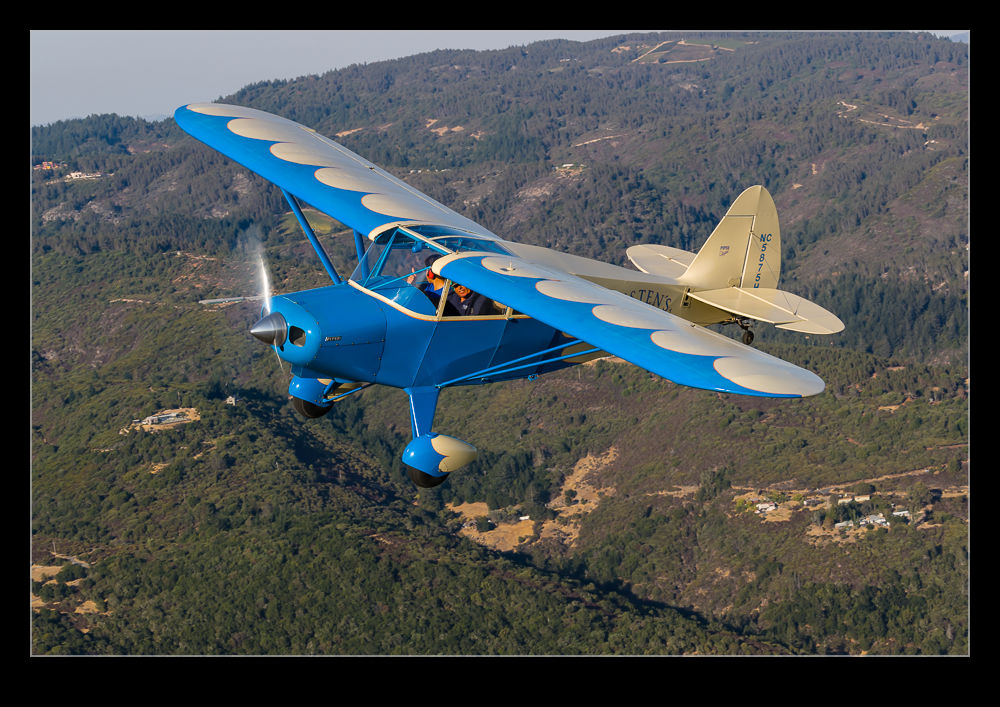 Eric Presten is a guy who spends his career photographing other people’s aircraft. He is not so often the subject of the photo. Dave Leininger was writing an article on Piper Clippers and wanted some shots of Eric’ aircraft to illustrate the piece along with some details of the modifications it has and how Eric uses it. I was up at Sonoma Skypark on the day that Dave was visiting and he kindly allowed me along on the photo flight. A Bonanza was the camera ship so I took the second spot shooting over Dave while he was seated on the floor.
Eric Presten is a guy who spends his career photographing other people’s aircraft. He is not so often the subject of the photo. Dave Leininger was writing an article on Piper Clippers and wanted some shots of Eric’ aircraft to illustrate the piece along with some details of the modifications it has and how Eric uses it. I was up at Sonoma Skypark on the day that Dave was visiting and he kindly allowed me along on the photo flight. A Bonanza was the camera ship so I took the second spot shooting over Dave while he was seated on the floor.
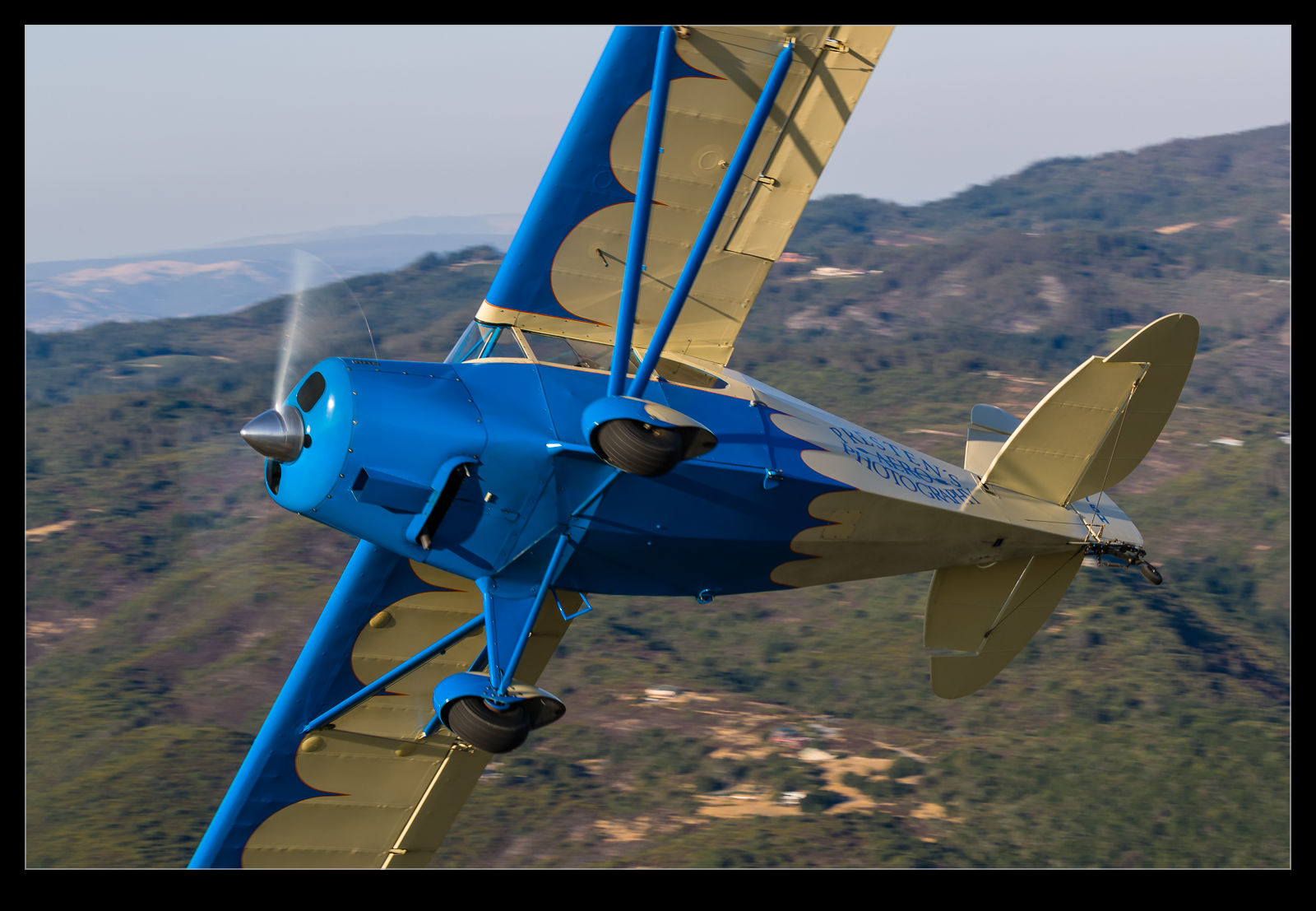 Dave had a publication date for his feature so I embargoed these shots until his piece had gone live which it now has. It was late in the afternoon so the light was getting pretty good. The Clipper is a cool little plane and Eric is used to formation work so makes a great pilot for bringing the plane in close. In addition, his plane has a roof that is modified to include a transparency which means he has good visibility upwards. This makes some shots looking down on the plane possible since he can maintain visibility of the camera ship safely while below us.
Dave had a publication date for his feature so I embargoed these shots until his piece had gone live which it now has. It was late in the afternoon so the light was getting pretty good. The Clipper is a cool little plane and Eric is used to formation work so makes a great pilot for bringing the plane in close. In addition, his plane has a roof that is modified to include a transparency which means he has good visibility upwards. This makes some shots looking down on the plane possible since he can maintain visibility of the camera ship safely while below us.
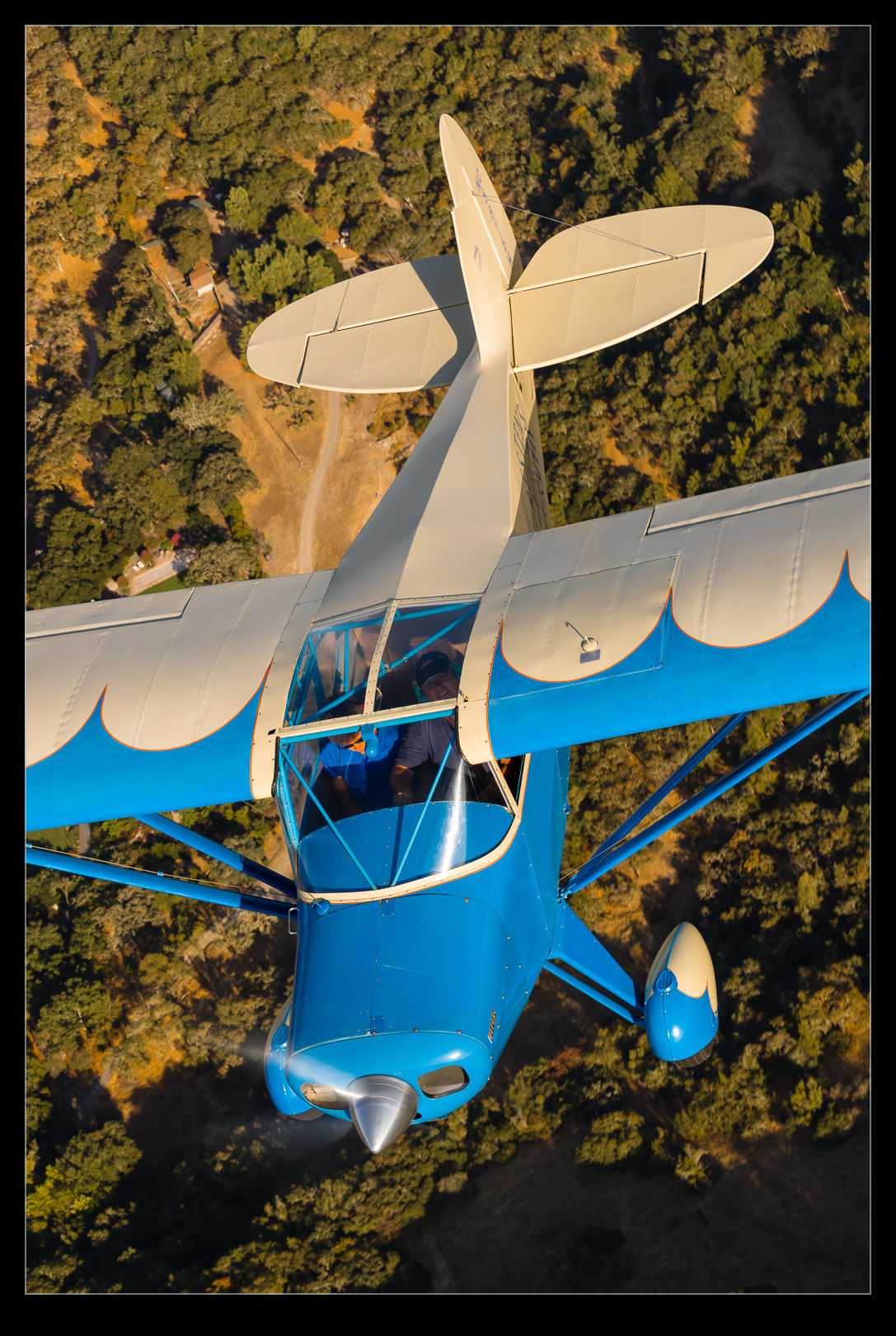 Shooting air to air is so much fun. It is impossible to avoid stopping shooting every once in a while and just looking outside to see the other plane so close to you. Of course, you are there for a reason so don’t spend too much time staring out of the door. However, never lose the enjoyment of doing something cool.
Shooting air to air is so much fun. It is impossible to avoid stopping shooting every once in a while and just looking outside to see the other plane so close to you. Of course, you are there for a reason so don’t spend too much time staring out of the door. However, never lose the enjoyment of doing something cool.
Port Townsend Aero Museum
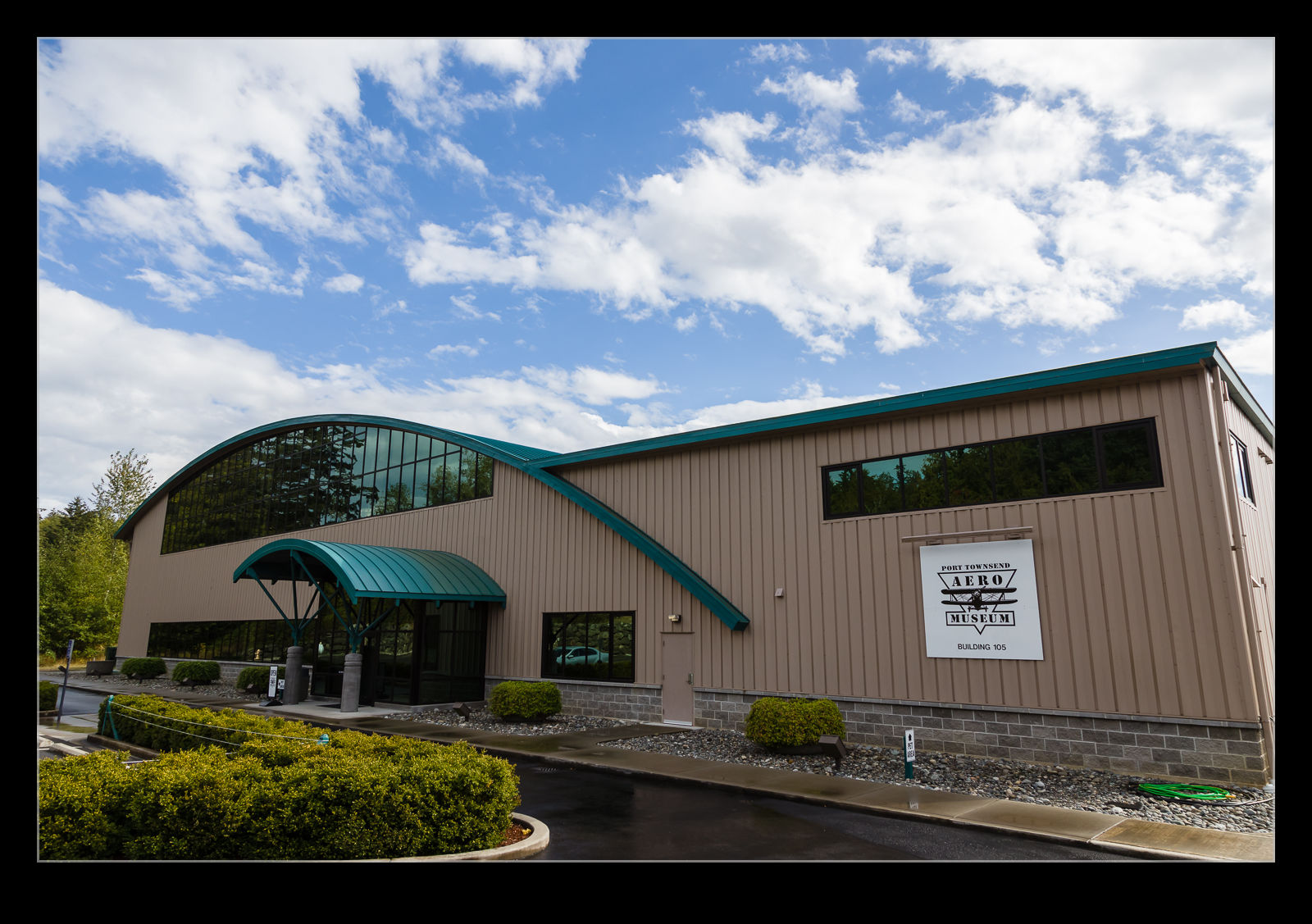 You know your wife is special when, while on vacation and discussing what to do, she points out an aviation museum that you could visit. Not only that, but when you say she can drop you and pick you up later, she says she would be happy to look around with you. What a star! During our trip to the northwest, Nancy suggested the Port Townsend Aero Museum. I wasn’t even aware of it but I was willing to take a look. To be honest, our schedule did not include a lot of spare time but we had an hour or too to look around.
You know your wife is special when, while on vacation and discussing what to do, she points out an aviation museum that you could visit. Not only that, but when you say she can drop you and pick you up later, she says she would be happy to look around with you. What a star! During our trip to the northwest, Nancy suggested the Port Townsend Aero Museum. I wasn’t even aware of it but I was willing to take a look. To be honest, our schedule did not include a lot of spare time but we had an hour or too to look around.
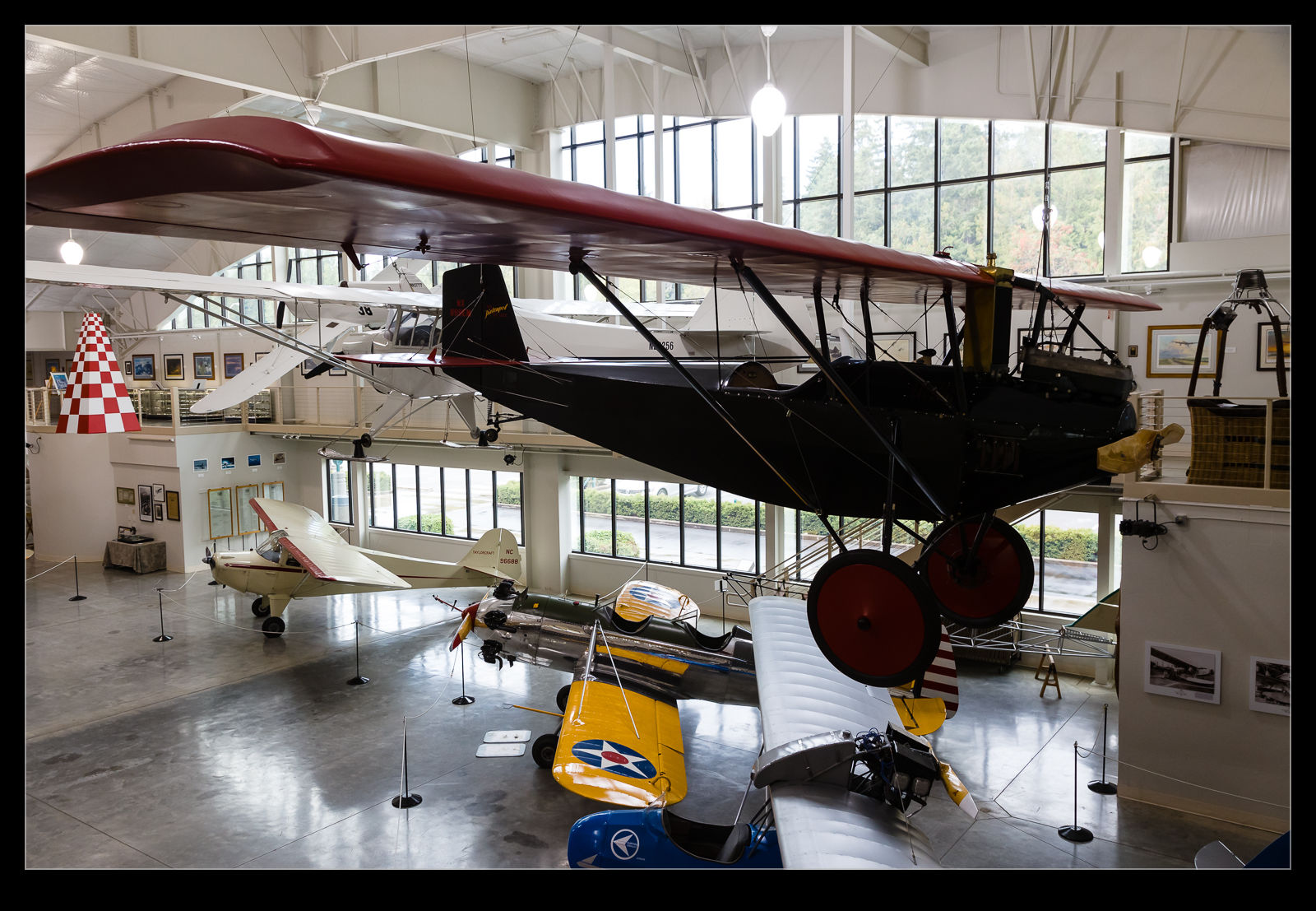 The museum is a really nicely laid out establishment. The hangar in which everything is kept is a really nice building and the exhibits are laid out well with some on the floor and others suspended from the roof. The way everything is put together is really good. There is space around each plane and the signs explaining what everything was were well put together.
The museum is a really nicely laid out establishment. The hangar in which everything is kept is a really nice building and the exhibits are laid out well with some on the floor and others suspended from the roof. The way everything is put together is really good. There is space around each plane and the signs explaining what everything was were well put together.
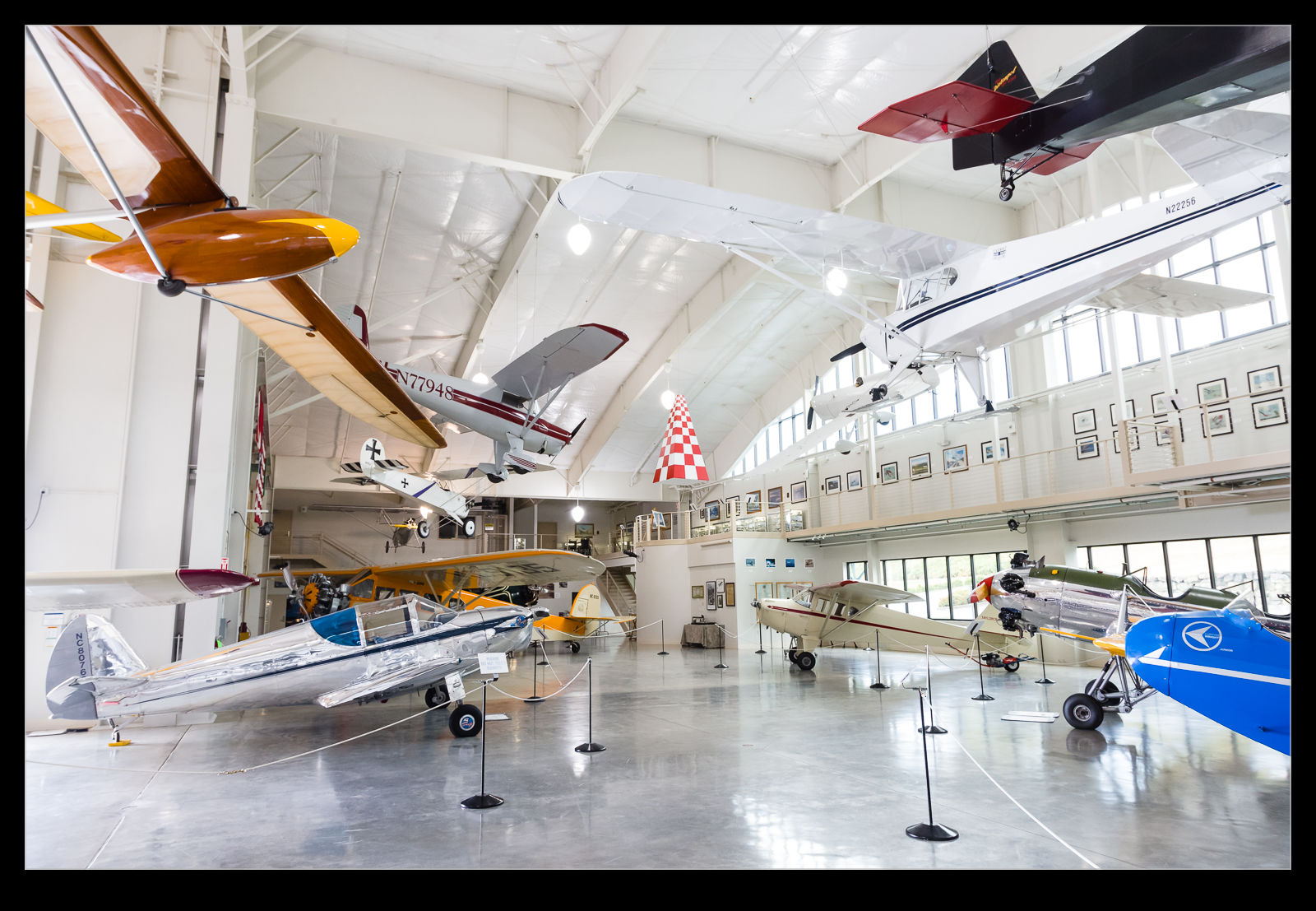 The planes are all in excellent condition and some are still airworthy. (My only minor gripe was that they all had a museum logo sticker on them which was not ideal from a photo point of view but this is hardly something to focus on.) The aircraft are all vintage types. Most are piston powered but there are some gliders too.
The planes are all in excellent condition and some are still airworthy. (My only minor gripe was that they all had a museum logo sticker on them which was not ideal from a photo point of view but this is hardly something to focus on.) The aircraft are all vintage types. Most are piston powered but there are some gliders too.
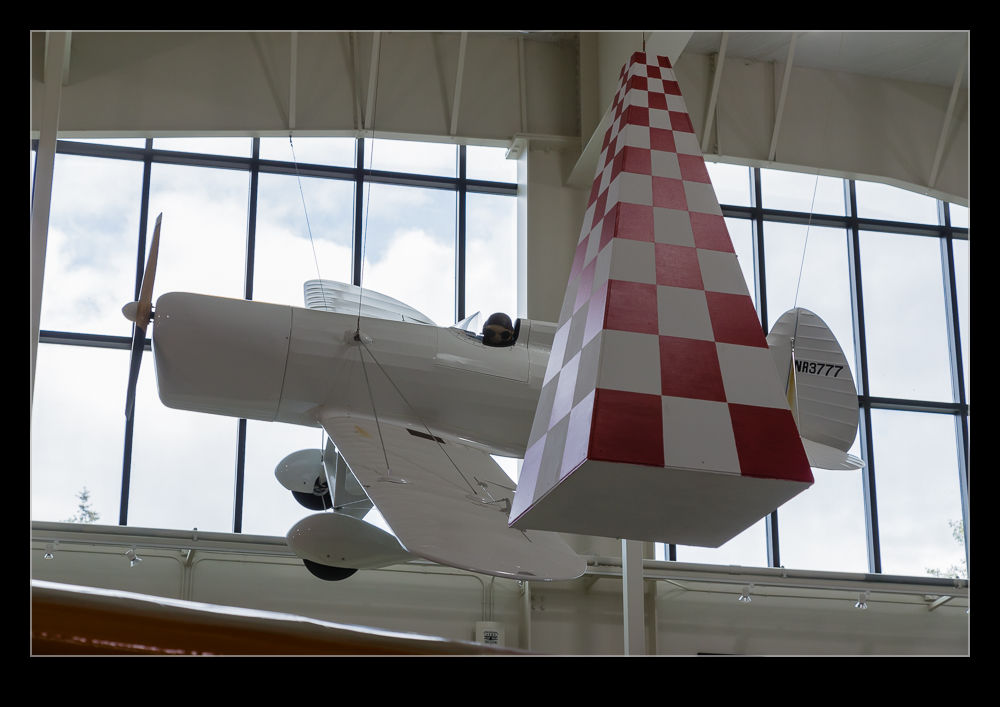 This proved to be a great surprise on the trip (including that Nancy enjoyed it so much)! I’m not sure how many visitors they get (it was quiet when we were there but we were on a day when I wouldn’t have expected many visitors competing for space. I hope the business is sustainable because it is a great little museum.
This proved to be a great surprise on the trip (including that Nancy enjoyed it so much)! I’m not sure how many visitors they get (it was quiet when we were there but we were on a day when I wouldn’t have expected many visitors competing for space. I hope the business is sustainable because it is a great little museum.
Otters and Beavers
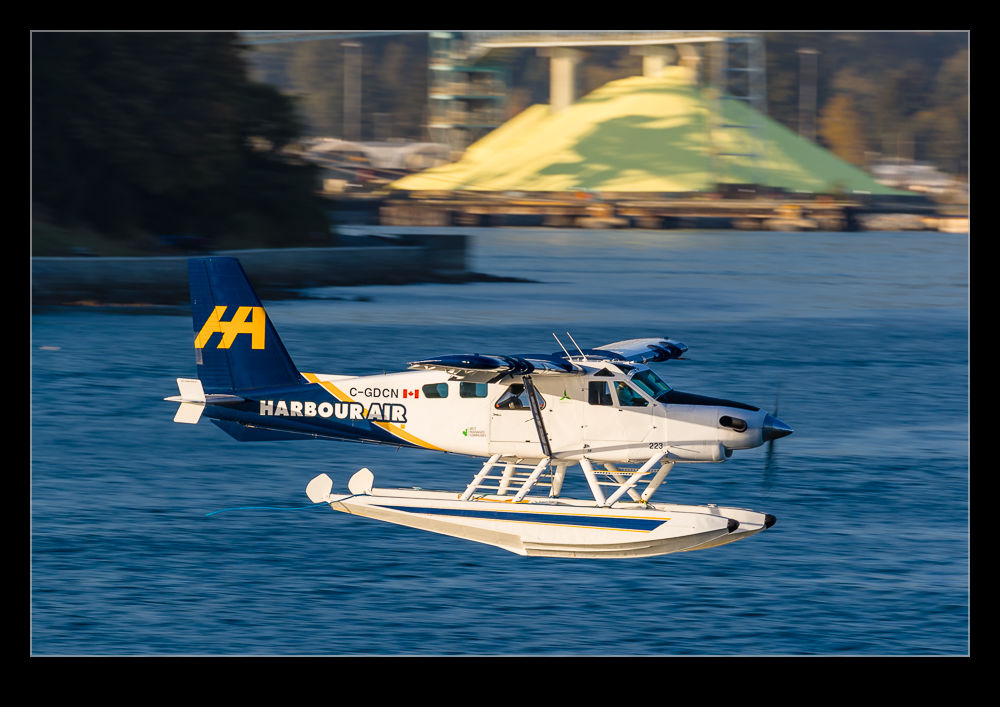 A trip to the northwest may involve seeing plenty of wildlife but the Otters and Beavers that I was most excited about were slightly different. These came from the stable of deHavilland Canada. More importantly, they were on floats. The Pacific Northwest is a great place for watching floatplanes. They are heavily used for transportation between many locations on the water. I saw a few while we were on San Juan Island or on the ferries between the islands but not a large number and not when I was in a position to get good shots. However, once we got to Vancouver, things ramped up a bit.
A trip to the northwest may involve seeing plenty of wildlife but the Otters and Beavers that I was most excited about were slightly different. These came from the stable of deHavilland Canada. More importantly, they were on floats. The Pacific Northwest is a great place for watching floatplanes. They are heavily used for transportation between many locations on the water. I saw a few while we were on San Juan Island or on the ferries between the islands but not a large number and not when I was in a position to get good shots. However, once we got to Vancouver, things ramped up a bit.
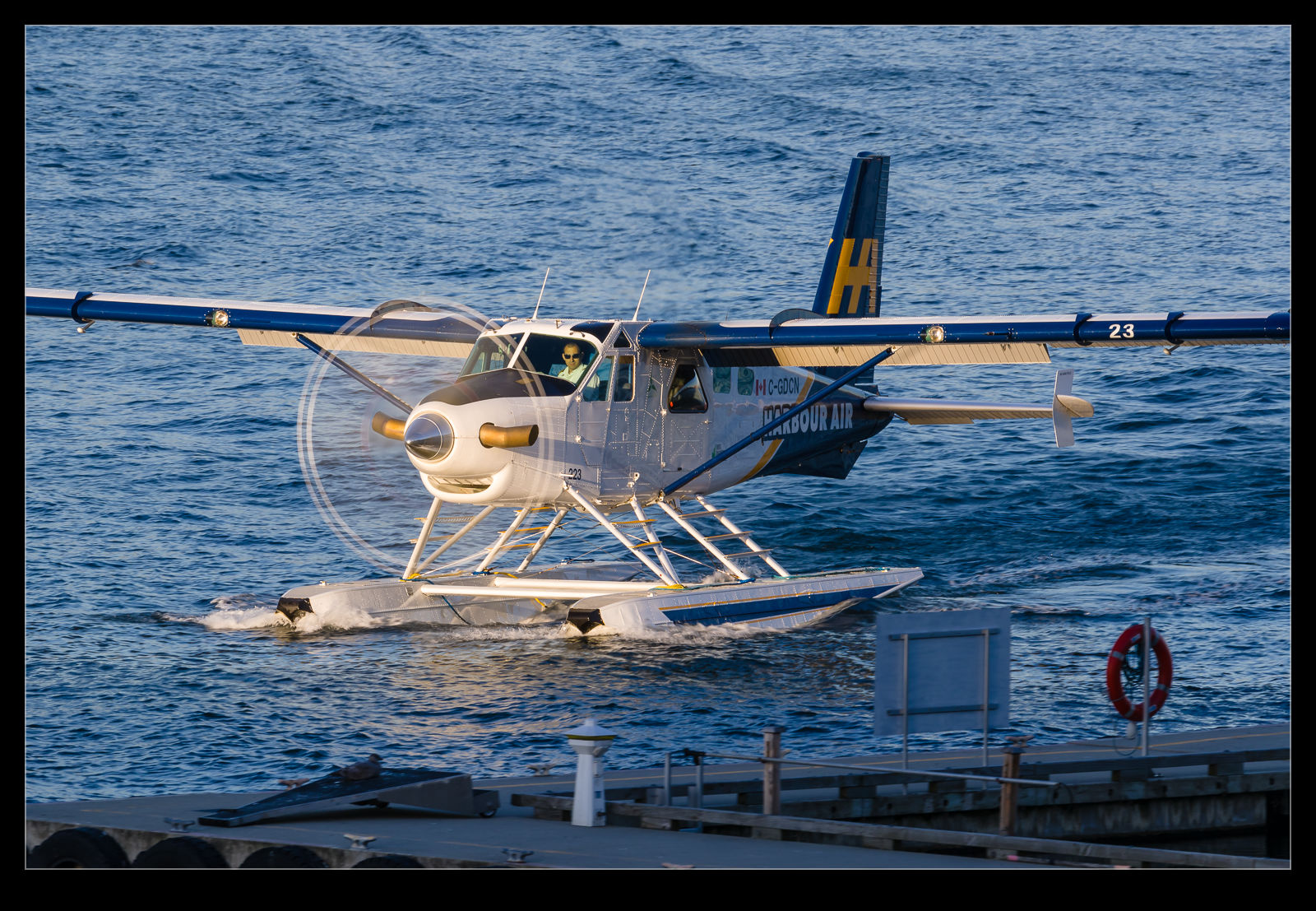 If you have not been to Vancouver, the harbour (it is a Canadian harbor so I think I am spelling it correctly) has a very busy floatplane base. Flights go to surrounding areas and the gulf islands on a regular basis. The planes are a combination of turbine powered Otters and Beavers with either piston engines or turbine conversions. Harbour Air is the dominant operator but others do show up occasionally. The area along the waterfront has undergone a big redevelopment with a convention center and it has great walkways along the water that provide an excellent view of the operations. Planes seem to be coming and going all the time. The may come in across Stanley Park and land in front of you or swing around the harbor and land towards you depending on the wind. As they water taxi in someone else will be heading out and departing towards North Vancouver before turning around the park and heading out over Lions Gate.
If you have not been to Vancouver, the harbour (it is a Canadian harbor so I think I am spelling it correctly) has a very busy floatplane base. Flights go to surrounding areas and the gulf islands on a regular basis. The planes are a combination of turbine powered Otters and Beavers with either piston engines or turbine conversions. Harbour Air is the dominant operator but others do show up occasionally. The area along the waterfront has undergone a big redevelopment with a convention center and it has great walkways along the water that provide an excellent view of the operations. Planes seem to be coming and going all the time. The may come in across Stanley Park and land in front of you or swing around the harbor and land towards you depending on the wind. As they water taxi in someone else will be heading out and departing towards North Vancouver before turning around the park and heading out over Lions Gate.
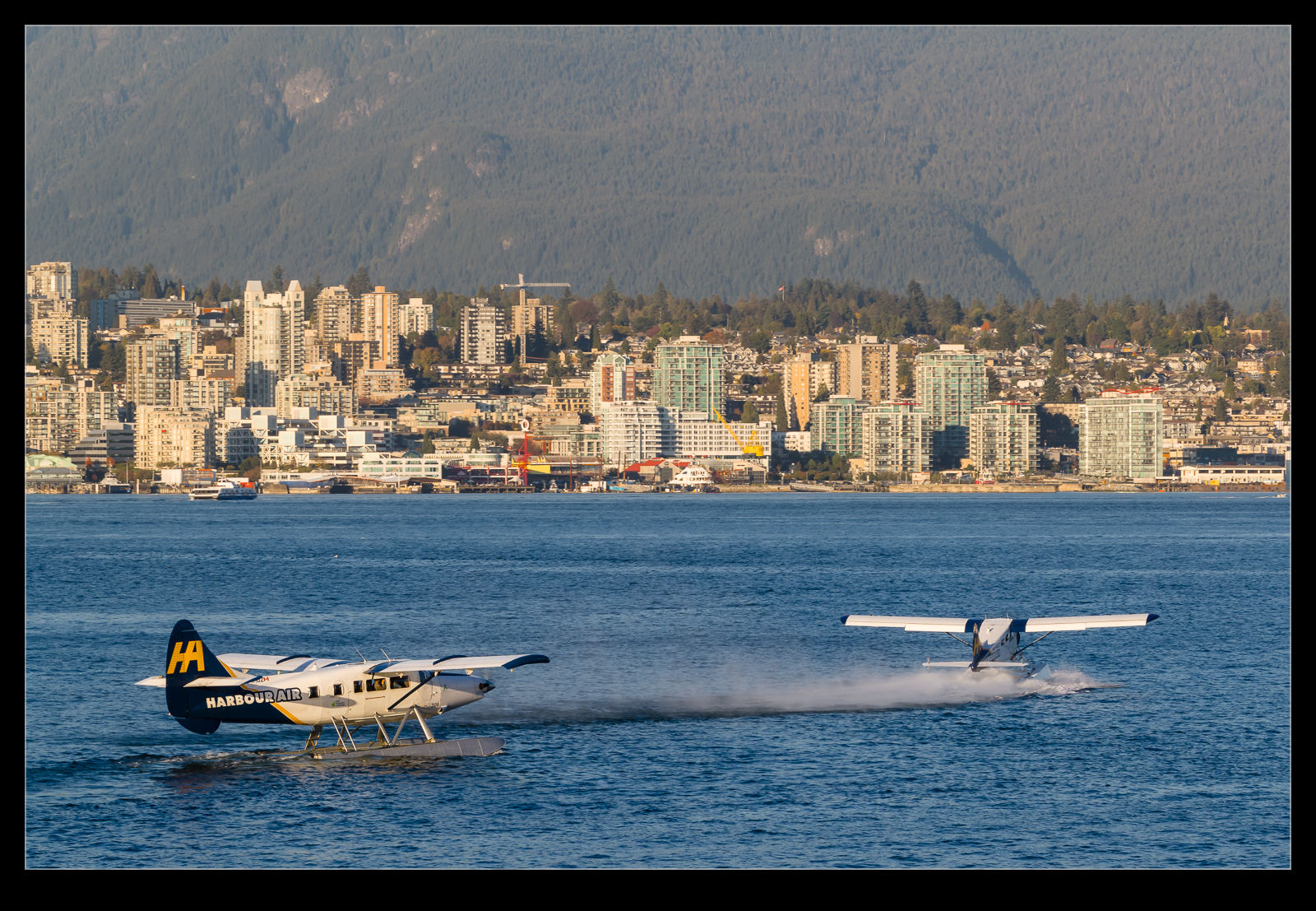 We were there at the end of the day so the evening light was very nice on the aircraft. The large number of high rise buildings on the shore does mean that shadows can encroach before the sun has gone down but this is a small issue. Later in the visit we were over in Stanley Park and I got to see some aircraft taking off since they came closer to our position. The damp air certainly makes for some nice streaming vortices off the props when they are at takeoff power.
We were there at the end of the day so the evening light was very nice on the aircraft. The large number of high rise buildings on the shore does mean that shadows can encroach before the sun has gone down but this is a small issue. Later in the visit we were over in Stanley Park and I got to see some aircraft taking off since they came closer to our position. The damp air certainly makes for some nice streaming vortices off the props when they are at takeoff power.
